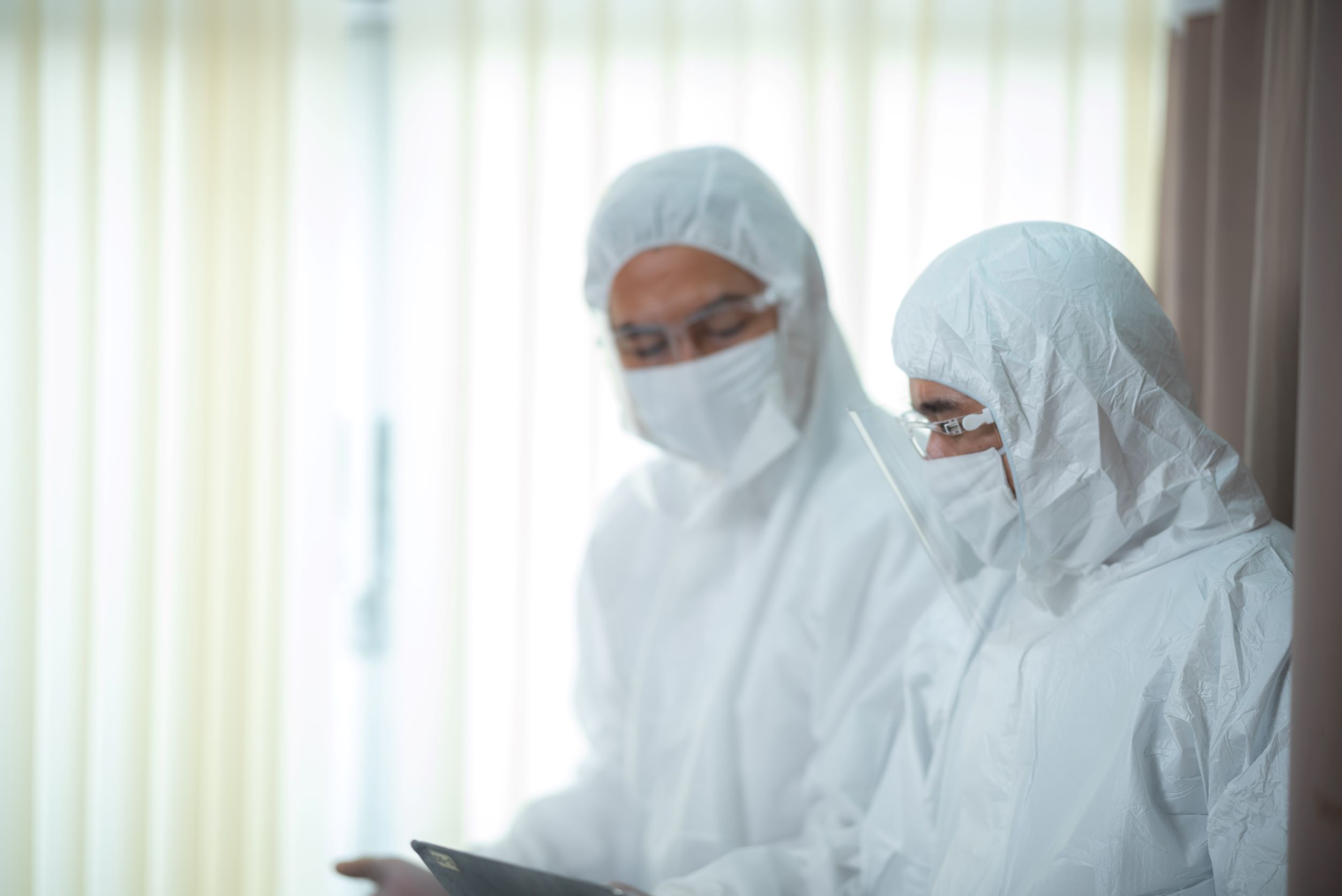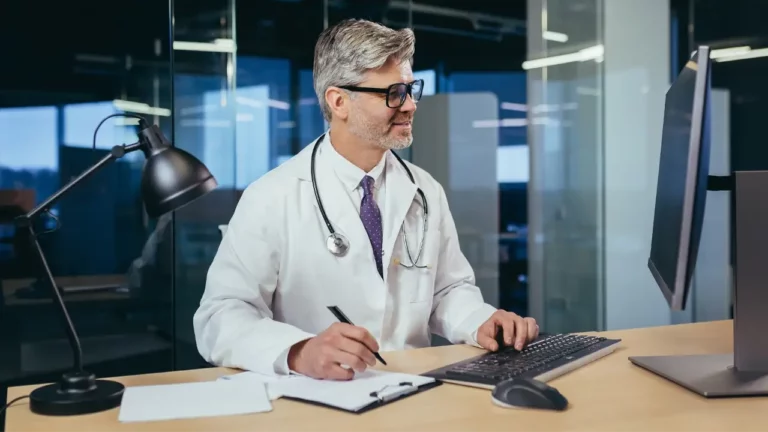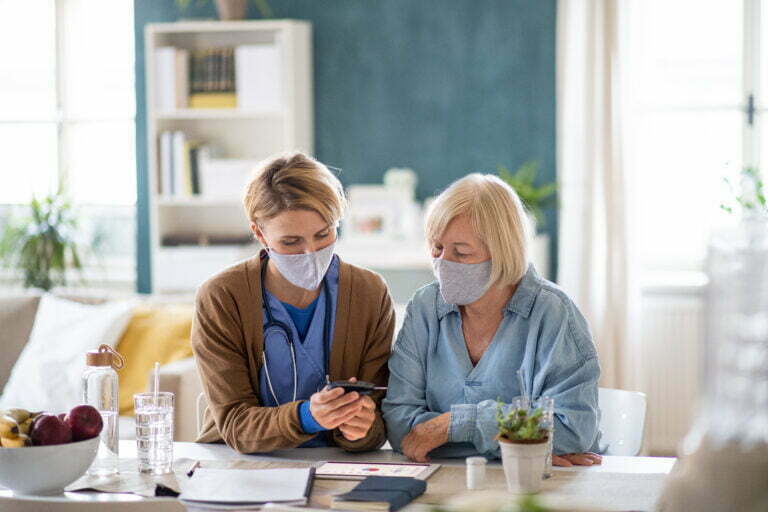When the COVID-19 pandemic strikes, with a growing incidence of chronic disease, an increasing population, and a rising demand for connected technology and services, the demand for Remote Patient Monitoring has been highlighted. Currently, in-person patient visits are decreasing because of COVID-19. This disease puts an emphasis on the gaps in the current health care system and looks for the latest and most advanced solutions to bring treatments to patients, wherever they are. Healthcare providers find themselves looking for strategies to monitor their patients. RPM has been accelerated due to its advancement using technology to monitor and capture patient health data and electronically transmit it to their doctors. Along with its benefits for patients’ health, RPM offers the opportunity to monitor and help patients with COVID-19. Here are some amazing ways how RPM helps Patients with COVID-19:
1. Recovery and care at their own comfort
Experts said that the COVID-19 pandemic has highlighted the gaps in our current healthcare system and the need for new solutions[1] to bring treatments to patients, wherever they are. The number of COVID-19 patients cared for at the hospital was high and occupied all the beds in the hospital; some patients were even relocated to other hospitals due to its capacity to provide service to all of them.
During the first year of the COVID-19 pandemic, the use of telehealth like RPM suddenly increased. In the post-pandemic world, patient preferences for using technology are critical. RPM is one of the options to deliver care beyond the gaps in terms of distance and fear of catching the infection. This will be very helpful for COVID-19 patients who are in need of healthcare services for a recovery period at the comfort of their home as well as crucial monitoring of the symptoms they are experiencing. RPM has the ability to connect and access patients’ health data with the health providers seeking interventions and improvements for recovery. Beyond clinics and hospitals, achieving care at the comfort of their home is safe and convenient. People who have mild cases of COVID-19 and are experiencing mild symptoms can manage their conditions at home while their healthcare providers can monitor them even at a far distance.
2. Remote Assessment of COVID-19 symptoms
Anyone can be caught with COVID-19 and may experience mild symptoms or even become seriously ill or die at any age if health protocols cannot be strictly followed. Through RPM, physical distancing and face-to-face appointments with healthcare providers, and in some cases might having direct contact with patients with COVID-19 is not a problem anymore. Without face-to-face transactions, RPM still can access the health data of patients through connected technology using medical devices and can even contact directly with the health providers. RPM enhances the doctor’s experience to proactively assess the symptoms of COVID-19 on an AI-powered dashboard receiving patient-generated health data from medical devices such as pulse oximeter, smartwatch or blood pressure monitor. This allows doctors to give timely assessment and medical intervention if needed.
Allowing low to medium-risk COVID-19 patients to be monitored at home also frees up more hospital rooms for seriously ill patients. This helps health systems overcome overcrowding hospitals by prioritizing patients who need urgent face-to-face care or treatment.
3. Lower hospitalization costs and travel time
Long hospitalization periods for COVID-19 patients place a significant financial strain on patients and their families, and the current healthcare system. While some patients do require hospitalization, the vast majority do not. Accurate data is critical for monitoring those at home. Remote patient monitoring enables COVID-19 patients to avoid hospital readmissions, resulting in an average hospital stay savings of over $14,000 per patient. Wearable devices which are inexpensive to be truly effective in monitoring physiological parameters such as oxygen saturation, blood pressure, heart rate, and respiration rate.
The support of the federal government’s reimbursement policy and cost-effective sensor-fusion RPM systems capable of performing real-time remote monitoring of COVID-19 patients’ physiological parameters, lowering healthcare costs and travel time is possible.
How DrKumo helps
When the COVID-19 pandemic hit, patients and providers had to adopt new trends and ways of receiving care like RPM. DrKumo is the first state-of-the-art Remote Patient Monitoring (RPM) with sensor fusion technology and real-time, continuous, live streaming of all physiological data. DrKumo platform is designed as a highly secure, HIPAA-compliant platform to provide seamless, easy-to-use automated Remote Patient Monitoring (RPM) for patients and providers. DrKumo RPM technology supports a rich array of devices to provide the necessary physiological data from patients.
Takeaway
Remote Patient Monitoring (RPM) adoption accelerated this year in response to the COVID-19 pandemic, addressing the urgent need to ensure care access while minimizing in-person encounters. Evaluating the overall impact, RPM plays a major role in this worldwide combat against the COVID-19 pandemic.
Reference:
- https://www.cms.gov/newsroom/press-releases/cms-physician-payment-rule-promotes-greater-access-telehealth-services-diabetes-prevention-programs








